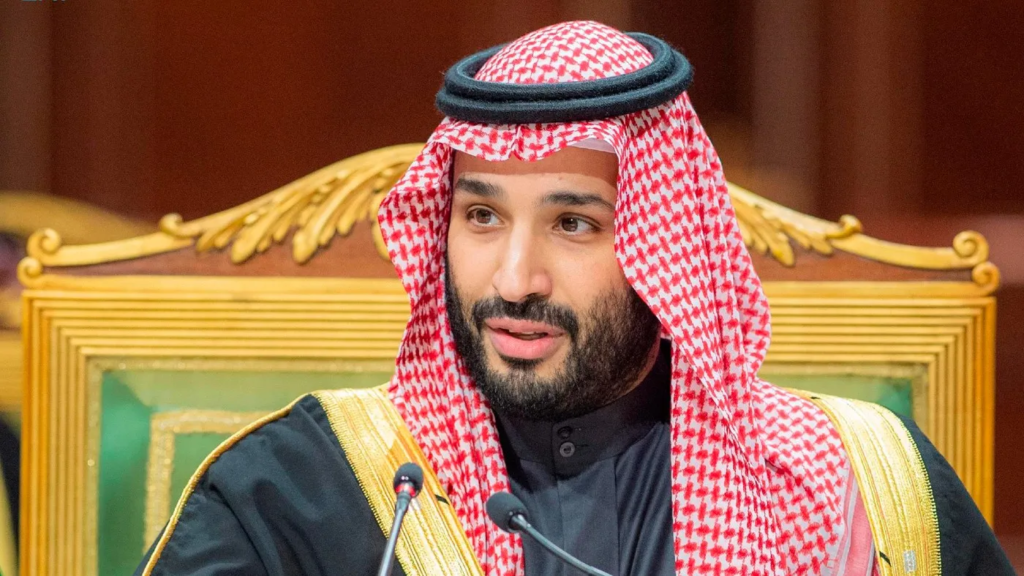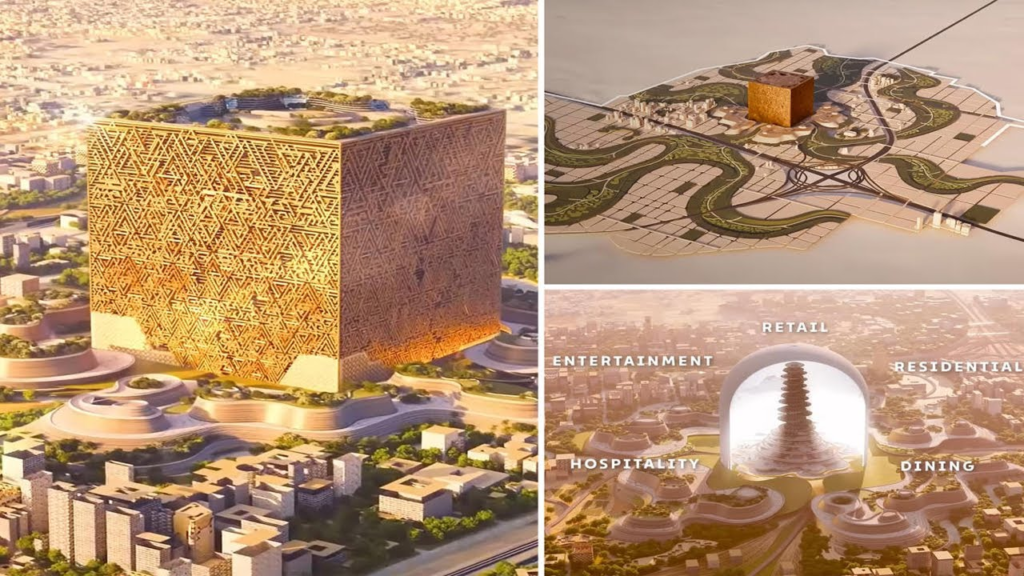Saudi Arabia is embarking on an unprecedented architectural feat with ‘The Mukaab,’ an ambitious $50-billion structure designed to reshape the urban skyline of Riyadh. The building is set to be a landmark of futuristic urban design and cultural heritage, symbolizing the nation’s drive to modernize and diversify its economy.
Part of the Kingdom’s Vision 2030 initiative led by Crown Prince Mohammed bin Salman, this project aims to transform Saudi Arabia’s capital into a modern metropolis that celebrates both innovation and tradition.
A Glimpse into The Mukaab’s Design and Purpose
Envisioned as a self-contained city, The Mukaab will tower 1,300 feet into the sky, with a cubical shape that measures 1,200 feet in width. Its architectural plan calls for a vast interior that can accommodate up to 20 Empire State Buildings, creating a monumental space of approximately 2 million square meters.
Within this expansive footprint, the Mukaab will host residential apartments, high-end hotels, office spaces, retail stores, and a range of entertainment and leisure facilities, making it a central hub for Riyadh’s thriving population.
Read : Saudi Arabia Warns Pakistan to Stop Sending Beggars to Country Under Umrah Visas
The inspiration for The Mukaab’s design pays homage to the Kingdom’s heritage, drawing from the traditional Najdi architectural style of central Saudi Arabia. This style, characterized by the use of mud-brick materials and geometric patterns, is celebrated in the building’s cubical form and intricate window designs.
Beyond its aesthetic aspects, The Mukaab will serve as a symbol of Saudi Arabia’s historical and cultural identity while embracing cutting-edge technology. Screens mounted around the building’s exterior will provide an immersive experience similar to the new Las Vegas Sphere, using AI-driven technology to project dynamic visuals that entertain and engage visitors.
Additionally, the Mukaab will sit amidst a district designed to evoke the surrounding Saudi landscape, replicating features like desert wadis and natural formations.
Read : Dubai Princess Launches ‘Divorce’ Perfume After Publicly Divorcing Husband
This area will incorporate over 1.04 lakh residential units, 9,000 hotel rooms, office spaces, retail areas, and community facilities, catering to the needs of residents and visitors alike. The broader goal behind this structure is to boost Saudi Arabia’s non-oil economy, providing an additional $51 billion to its GDP and creating hundreds of thousands of jobs.
Vision 2030: Building for the Future
The Mukaab’s construction aligns with Saudi Arabia’s Vision 2030, a forward-looking initiative that seeks to transition the Kingdom’s economy away from oil dependence by expanding into sectors like tourism, entertainment, and urban development.
With projects like The Mukaab, the Saudi government aims to attract both local and international investment, creating a vibrant, diversified economy that promises long-term growth and resilience.

One of the key aspirations of Vision 2030 is to establish Saudi Arabia as a hub of architectural and urban innovation. The Mukaab, with its immense size and multifunctional spaces, is emblematic of this vision.
Beyond its commercial value, the building will provide a versatile platform for events, exhibitions, and entertainment, fostering a unique social and cultural environment.
The developers have announced that cutting-edge technology will drive this space, transforming it into a digital hub where visitors can enjoy immersive experiences powered by AI and virtual reality.
This integration of digital features within The Mukaab serves to enhance the building’s appeal as a world-class tourist destination. High-tech screens will display visuals tailored to engage audiences and deliver memorable interactions.
This focus on digital sophistication underscores Saudi Arabia’s ambition to blend technology with its traditional heritage, making The Mukaab an architectural landmark and a digital marvel.
Challenges and Criticisms Surrounding The Mukaab Project
While the Mukaab’s massive scale and economic promise are celebrated, the project has sparked debate and criticism. Some critics have drawn comparisons between The Mukaab and the Kaaba, Islam’s most revered site in Mecca, due to its cubic form and the cultural significance of its design.
Such comparisons have raised concerns among the religious community about the potential symbolic implications of the structure.

Human rights advocates have also voiced concerns about the impact of the project on local communities and migrant workers. Large-scale construction projects in Saudi Arabia have previously faced scrutiny due to reports of difficult working conditions for migrant laborers.
The ambitious nature of The Mukaab project, coupled with the rapid timeline required to meet the Vision 2030 goals, has raised concerns about labor exploitation and the potential for forced displacement of nearby residents.
Additionally, the enormous resource and energy requirements of constructing and maintaining such a large structure have brought attention to sustainability concerns. Although the project aligns with Vision 2030’s goal of diversifying the Saudi economy, critics argue that the environmental impact of such a large-scale project may contradict global sustainability efforts.
The government, however, has committed to taking steps to ensure ethical practices and sustainable construction methods to mitigate the project’s environmental footprint.
let’s enjoy few years on earth with peace and happiness….✍🏼🙏

